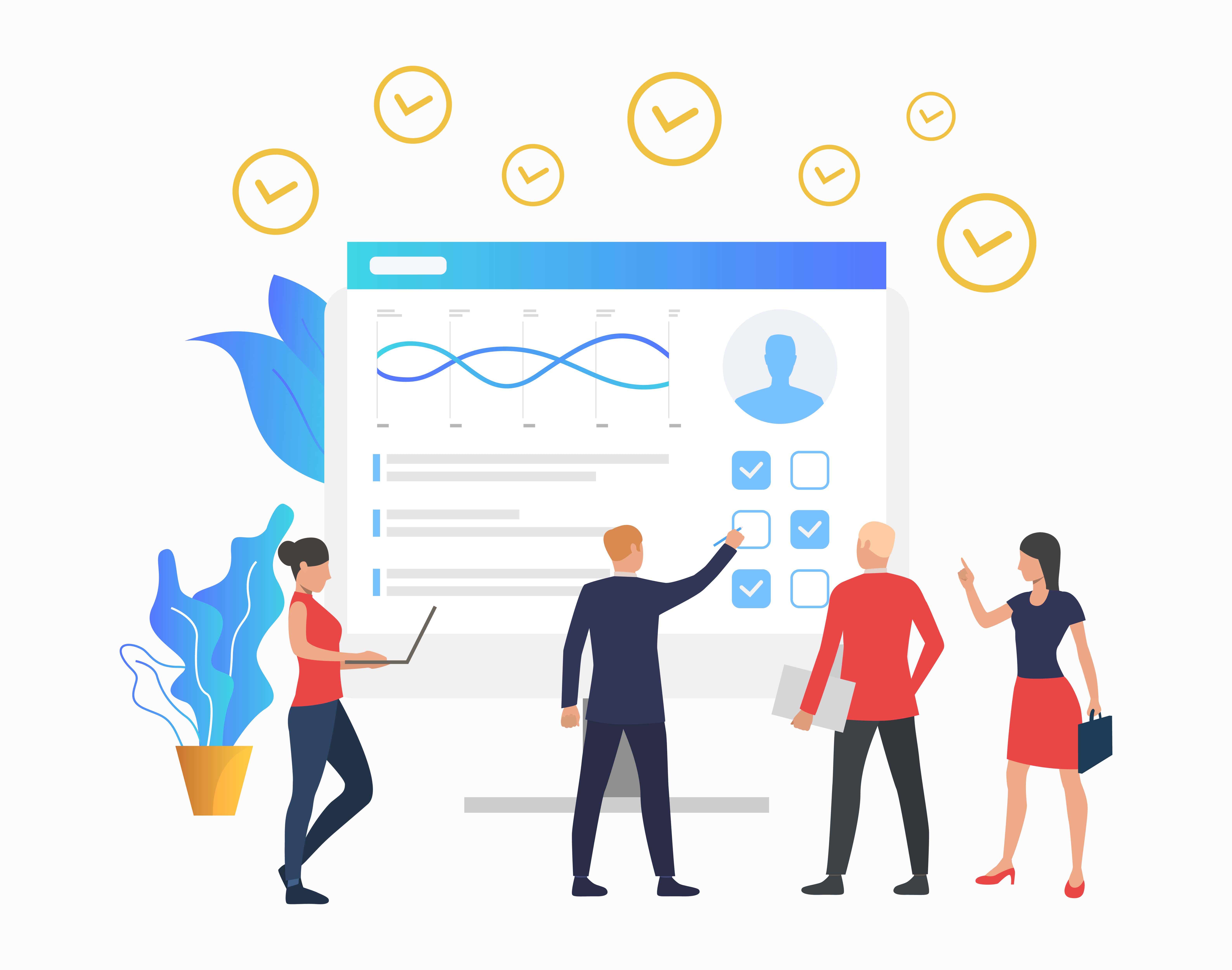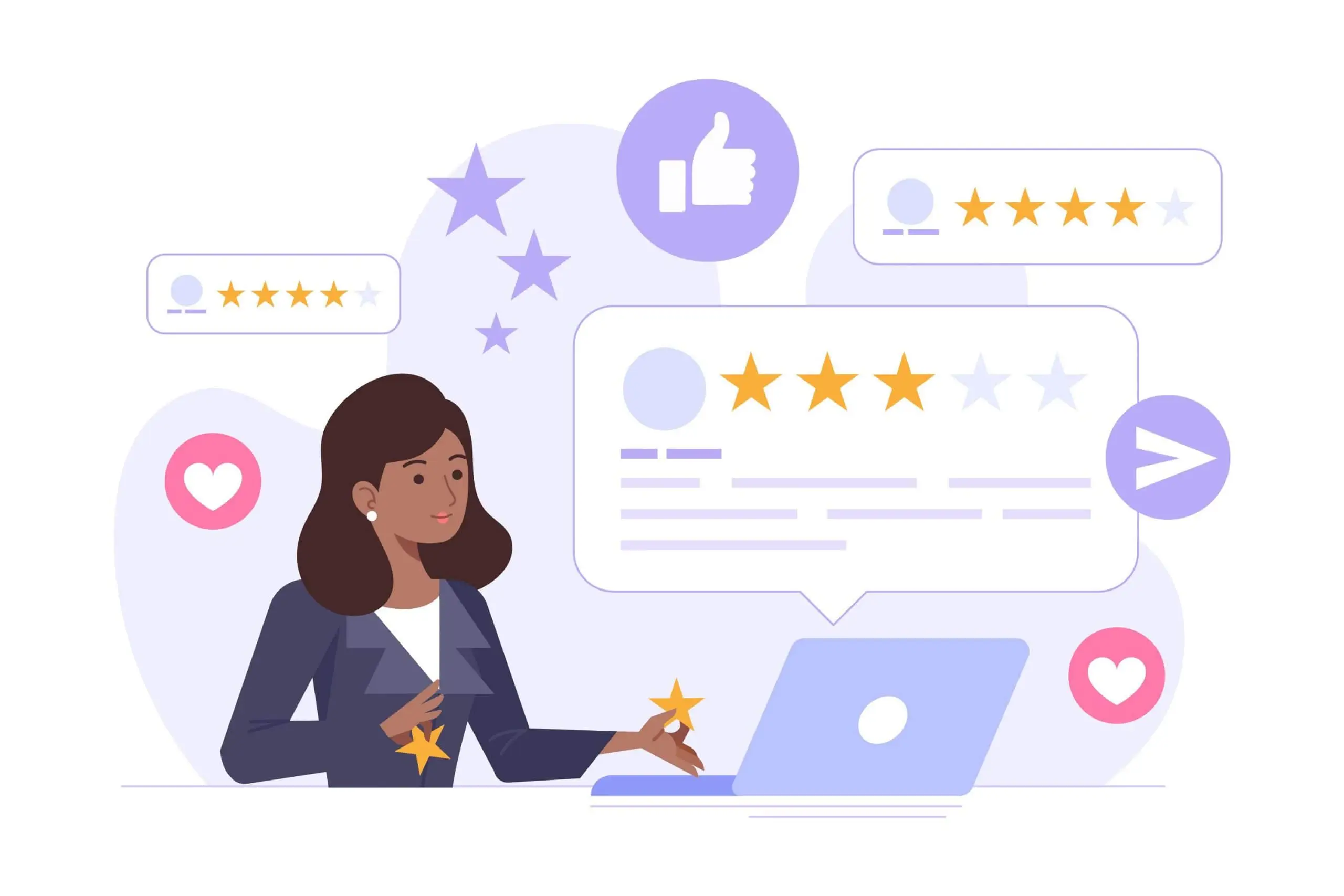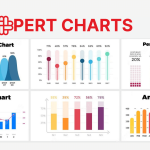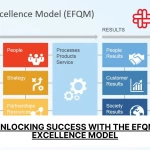Customer profiling is the practice of gathering information about a company's customers in order to better understand their needs, preferences, and behaviour. This information can then be used to segment customers into groups based on their shared characteristics, and to develop targeted marketing campaigns and product offerings that are tailored to each group's unique needs.
In this article, we will explore the basics of customer profiling, including its definition, benefits, and the various types and methods of profiling that are commonly used. We will also discuss the steps involved in creating a customer profile, provide some examples of customer profiles in action, and explore the role of customer profiling in marketing automation.
What Is Customer Profiling?
Customer profiling is the art and science of creating detailed descriptions of your ideal customers. Think of it as painting a vivid portrait of the people who are most likely to engage with your products or services. It goes beyond basic demographics and delves into psychographics, behaviours, preferences, and needs.
At its core, customer profiling aims to answer essential questions such as who your customers are, what motivates them, how they make purchasing decisions, and what challenges they face. By doing so, it provides a holistic view of your target audience, enabling you to tailor your marketing strategies, product development, and customer service to align with their desires and expectations.
Customer Segmentation vs. Customer Profiling: Key Differences
Customer segmentation and customer profiling are often used interchangeably, but they serve distinct purposes. While customer profiling creates a detailed persona of your ideal customer, customer segmentation involves dividing your customer base into smaller, more manageable groups based on shared characteristics.
Customer profiling zooms in on individual personas, whereas segmentation groups individuals into broader categories. Segmentation is like sorting apples into different crates based on their size and colour, while profiling is about understanding each apple's unique flavour, how it grows, and what makes it stand out. However, they sure do complement each other. In fact, statistics show that utilising customer personas for segmentation enhances insights for 90% of businesses regarding their audience.
Types of Consumer Profiling
There are several different types of customer profiling that are commonly used by companies. Some of the most common types include:
1. Demographic Profiling
Demographic profiling focuses on the basic, quantifiable aspects of customers. This includes information such as age, gender, income, education level, marital status, occupation, and location. Demographic data provides businesses with a foundation for understanding the composition of their customer base. For instance, a company targeting luxury products might focus on high-income individuals, while a children's toy store might cater to parents within a specific age range.
2. Psychographic Profiling
Psychographic profiling delves into the psychological and emotional aspects of consumer behaviour. It involves gathering data about customers’ values, interests, hobbies, lifestyles, attitudes, and opinions. This type of profiling allows businesses to understand the deeper motivations behind consumer choices. For example, two customers might buy the same brand of running shoes, but for one, it's about fitness and health (a value), while for the other, it's about the fashion statement (a lifestyle choice). Psychographic profiling helps in creating marketing campaigns that resonate with customers on a personal level.
3. Behavioural Profiling
Behavioural profiling focuses on understanding how customers interact with products and services. It involves analysing their purchasing patterns, such as what products they buy, how often they make purchases, their preferred payment methods, and brand loyalty. Behavioural data also includes online interactions, like website visits, social media engagement, and response to marketing emails. For instance, behavioural profiling might reveal that a group of customers frequently buys electronics online and participates in online tech forums. This information can guide businesses in creating targeted advertising and product recommendations.
4. Technographic Profiling
Technographic profiling is particularly relevant in the digital age. It involves understanding the technological preferences and usage habits of customers. This includes the devices they use, the operating systems they prefer, the apps they download, and their comfort level with technology. For example, knowing that a segment of customers predominantly uses smartphones and prefers mobile apps for shopping can influence a company's decision to invest in mobile app development and optimise their website for mobile devices.
5. Geographical Profiling
Geographical profiling focuses on the location-based data of customers. This includes information like city, state, country, climate preferences, and urban or rural residence. Geographical data is vital for businesses with physical stores or those offering location-specific services. For instance, a retail chain might use geographical profiling to customise their product offerings based on the climate of a specific region, offering winter wear in colder regions and summer wear in warmer areas.
6. Lifetime Value Profiling
Lifetime value profiling involves predicting the long-term value of a customer to a business. It takes into account factors such as customer loyalty, average purchase value, purchase frequency, and customer retention rate. By understanding the lifetime value of different customer segments, businesses can allocate resources effectively, focusing more on retaining high-value customers while also nurturing potential high-value customers.
Each type of customer profiling provides unique insights, allowing businesses to create targeted marketing strategies, enhance customer experiences, and build stronger, more meaningful relationships with their audience. By combining these profiling methods, businesses can create a comprehensive view of their customers, enabling them to adapt and tailor their offerings to meet evolving customer needs and preferences.
The Benefits of Customer Profiling
Investing in customer profiling can yield a range of benefits for your business. Let's explore some of them:
Improved Marketing Strategies
One of the primary benefits of customer profiling is its ability to revolutionise marketing strategies. By deeply understanding customer needs, preferences, and behaviours, businesses can tailor their marketing messages with precision. This targeted approach ensures that promotional efforts resonate with the audience, leading to higher engagement and conversion rates. Whether it's crafting personalised email campaigns or creating compelling social media content, customer profiling empowers marketers to speak directly to the hearts and minds of their customers.
Product Development
In the realm of product development, customer profiling acts as a guiding light. By analysing customer preferences and identifying pain points, businesses can innovate products that truly meet the needs of their target audience. Customer feedback, gathered through surveys and interactions, provides valuable insights for refining existing products or services and developing new ones. This customer-centric approach not only enhances product quality but also fosters brand loyalty, as customers feel heard and valued.
Enhanced Customer Service
Exceptional customer service is a cornerstone of successful businesses, and customer profiling plays a pivotal role in delivering personalised and efficient support. Armed with detailed customer profiles, support teams can anticipate customer needs and concerns. They can offer tailored solutions, troubleshoot effectively, and provide relevant recommendations. Whether it's a quick response to a query or a proactive resolution to an issue, personalised customer service strengthens customer relationships, leading to higher satisfaction and retention rates.
Increased Customer Retention
Customer profiling is instrumental in building lasting customer relationships. By understanding individual preferences, businesses can create loyalty programmes, discounts, and exclusive offers tailored to specific customer segments. These personalised incentives not only attract new customers but also retain existing ones. When customers feel appreciated and understood, they are more likely to remain loyal to a brand, leading to higher customer retention rates and a stable revenue stream.
Targeted Advertising
In the digital age, where online advertising is ubiquitous, targeted advertising is key to cutting through the noise. Customer profiling enables businesses to identify high-value customer segments and target them with precision. By showing relevant ads to specific audience groups, businesses can maximise their advertising budget and improve the return on investment (ROI). This targeted approach ensures that marketing resources are utilised efficiently, reaching the right people at the right time with the right message.
Competitive Advantage
In a competitive market, understanding customers better than competitors can be a game-changer. Businesses that invest in customer profiling gain a significant competitive advantage. By offering personalised experiences, tailored products, and exceptional service, they stand out in the minds of customers. This positive reputation not only attracts new customers but also keeps competitors at bay. A satisfied, loyal customer base becomes a strong barrier against market challenges, ensuring the long-term sustainability and success of the business.
In essence, customer profiling transcends traditional marketing strategies. It is a dynamic tool that empowers businesses to connect with customers on a deeper level, fostering trust, loyalty, and advocacy. By leveraging the insights derived from customer profiles, businesses can create a customer-centric ecosystem where every interaction is meaningful, every product is relevant, and every customer feels valued. The benefits of customer profiling extend far beyond immediate sales; they pave the way for enduring customer relationships and sustainable business growth.
Steps to Creating a Customer Profile
Now that we understand the significance of customer profiling, let's dive into the steps required to create an effective customer profile:
1. Data Collection
The first step in creating a customer profile is gathering relevant data. Utilise various sources, including website analytics, social media insights, customer surveys, and purchase histories. Data should encompass demographics (age, gender, location), psychographics (interests, values, lifestyles), behavioural data (purchase history, website interactions), and any other pertinent information specific to your business.
2. Segment Your Data
Once you’ve amassed a wealth of data, the next step is to segment it. Identify common patterns and characteristics within the data. Group customers based on similarities such as age, preferences, buying frequency, or any other relevant criteria. These segments will serve as the foundation for creating distinct customer personas.
3. Develop Personas
With segmented data in hand, it's time to create detailed customer personas. Personas are fictional characters representing specific segments of your audience. Each persona should have a name, age, occupation, hobbies, goals, challenges, and preferred communication channels. Dive deep into the psychological and emotional aspects of your customers. For instance, if your business caters to tech-savvy millennials, your persona might be “Tech Enthusiast Taylor,” a 28-year-old professional who values innovation and convenience.
4. Validate Your Profiles
Customer profiles are not static; they evolve as your business and customer base change. Regular validation is essential to ensure accuracy. Continuously gather feedback through surveys, customer interviews, and social media interactions. Stay attentive to shifts in customer behaviour and update your personas accordingly. Keeping your profiles up-to-date ensures that your marketing efforts remain relevant and effective.
5. Empathy Mapping
Empathy mapping is a technique used to gain deeper insights into customer emotions, thoughts, and motivations. It involves creating a visual representation of a customer persona’s feelings, actions, and pain points. By putting yourself in your customers’ shoes, you can better understand their experiences. This understanding helps in tailoring marketing messages and product offerings to resonate emotionally with your audience.
6. Test and Refine
Implement your customer profiles in marketing campaigns, product development, and customer service interactions. Monitor the outcomes closely. Analyse the response rates, sales figures, and customer feedback. If certain strategies don’t yield the desired results, refine your customer profiles and iterate on your approach. Testing and refining are continuous processes that allow you to fine-tune your customer profiles for maximum effectiveness.
7. Collaborative Approach
Creating customer profiles is not limited to the marketing department alone. Involve various teams within your organisation, including sales, customer service, and product development. Each department holds valuable insights and perspectives about customers. By collaborating, you can create more comprehensive and accurate customer profiles that reflect the collective understanding of your entire organisation.
8. Utilise Advanced Tools
In the digital age, numerous tools and software platforms are available to streamline the process of customer profiling. Customer relationship management (CRM) systems, data analytics tools, and marketing automation platforms can provide in-depth customer insights and automate the process of creating and updating customer profiles. Leveraging these tools saves time and ensures accuracy in your profiling efforts.
Creating detailed customer profiles is a dynamic and ongoing process that requires a blend of data analysis, empathy, and strategic thinking. By following these steps and staying attuned to your customers’ evolving needs and behaviours, you can develop customer profiles that serve as invaluable assets, guiding your business toward customer-centric success.
Methods of Customer Profiling
There are several methods of customer profiling that companies can use to gather data about their customers. Some of the most common methods include:
1. Data Analysis
Data analysis forms the backbone of customer profiling. By collecting and meticulously analysing data from multiple sources, businesses can unearth invaluable insights into customer behaviour. Website analytics, social media metrics, and customer relationship management (CRM) data are goldmines of information. Analysing these data points helps identify patterns, such as popular products, frequently visited website pages, and peak purchase times.
Through data analysis, businesses can discern not just what customers buy but also how they navigate websites, the time spent on different sections, and the point at which they abandon a purchase. These insights provide a nuanced understanding of customer preferences and behaviours, shaping the foundation of accurate customer profiles.
2. Surveys and Questionnaires
Surveys and questionnaires are direct avenues to tap into the minds of customers. Crafting well-designed surveys allows businesses to pose targeted questions about preferences, challenges, and satisfaction levels. Open-ended questions can provide qualitative data, shedding light on the emotional aspects of customer experiences.
Utilising techniques like Likert scales helps quantify qualitative responses, offering measurable data for analysis. The key here is to design surveys that are concise, clear, and engaging, ensuring higher response rates and richer data.
3. Interviews and Focus Groups
In-depth interviews and focus groups provide qualitative insights that quantitative data often can't capture. Engaging with customers on a personal level unveils the motivations behind their choices. These methods allow for probing questions, enabling businesses to uncover underlying emotions and drivers that influence decision-making.
Focus groups, in particular, encourage participants to discuss topics among themselves, often leading to unexpected insights. Hearing firsthand accounts of experiences and preferences enriches the qualitative data pool, making customer profiles more human and relatable.
4. Observation
Observing customer behaviour in real-time, whether online or in physical stores, offers a window into their natural choices and inclinations. Heatmaps and user session recordings on websites reveal the exact areas customers focus on, helping businesses understand what captures their attention.
In brick-and-mortar stores, observing foot traffic patterns, popular product sections, and customer interactions with staff can provide valuable context. Additionally, social media monitoring allows businesses to gauge sentiment and track discussions about their brand, products, or services in real-time.
5. Third-Party Data
In the digital age, third-party data sources are invaluable for filling gaps in customer profiles. Data enrichment services provide additional demographic and psychographic information. This external data can include socioeconomic status, interests, hobbies, and online behaviours.
Integrating third-party data into customer profiles offers a more holistic view, especially when first-party data might be limited. However, it's crucial to validate the accuracy of such data to ensure its relevance and reliability in shaping customer personas.
Each of these methods, when used strategically and in combination, paints a vivid picture of the customer landscape. By employing a mix of quantitative and qualitative techniques, businesses can create nuanced, multidimensional customer profiles that form the basis for targeted marketing, product development, and exceptional customer experiences.
Customer Profiling Examples
To better understand how customer profiling works in practice, let's explore a couple of real-world examples:
1. Starbucks: Understanding the Essence of Every Sip
Starbucks, the global coffeehouse chain, has mastered the art of customer profiling to create tailored experiences for its diverse customer base. They have developed distinct customer personas, allowing them to cater to various preferences and lifestyles. Let's take a closer look at a couple of their customer profiles:
Persona 1: The Student
Demographics: Age 18-25, mostly students or young professionals, urban dwellers.
Preferences: Affordable options, cosy atmosphere for studying, free Wi-Fi, budget-friendly menu items.
Behaviour: Regular visits during exam seasons, often orders coffee-based beverages, appreciates discounts and loyalty programmes.
Starbucks recognises the importance of this segment and tailors their marketing strategies accordingly. They offer student discounts, promote study-friendly environments, and introduce budget-friendly options. Their mobile app, which allows pre-ordering and easy payment, caters to the busy schedules of students and young professionals.
Persona 2: The Professional
Demographics: Age 25-45, professionals, often working remotely or holding meetings.
Preferences: High-quality coffee, comfortable workspace, premium menu items, quick service.
Behaviour: Regular visits during weekdays, values efficient service, often buys premium drinks like lattes and specialty beverages.
To cater to professionals, Starbucks ensures a sophisticated ambiance, emphasises quality, and provides convenient services. Their locations are equipped with ample power outlets, creating an ideal environment for remote work. Starbucks' customer profiling allows them to create spaces and offerings that resonate deeply with each segment, fostering customer loyalty and brand advocacy.
2. Amazon: Tailoring the Online Marketplace Experience
Amazon, the e-commerce giant, excels in customer profiling to personalise the online shopping experience. By analysing vast amounts of data, Amazon creates detailed customer profiles that influence everything from product recommendations to marketing communication. Here’s a glimpse of a couple of their customer profiles:
Persona 1: The Avid Reader
Demographics: Age 30-60, avid readers, professionals or enthusiasts.
Preferences: Books, e-books, audiobooks, book-related accessories, personalised reading suggestions.
Behaviour: Regularly purchases books, participates in book clubs, leaves reviews, prefers e-books for convenience.
Amazon caters to avid readers by offering personalised book recommendations based on past purchases and browsing history. They send newsletters featuring new releases and discounts on books matching the customer's interests. Additionally, the Kindle e-reader offers a vast library of e-books, appealing to readers who prefer digital formats.
Persona 2: The Tech Enthusiast
Demographics: Age 18-35, tech-savvy, early adopters of gadgets and electronics.
Preferences: Latest gadgets, tech accessories, smart home devices, gaming consoles.
Behaviour: Follows tech blogs and forums, pre-orders new gadgets, actively engages in online tech communities.
For tech enthusiasts, Amazon showcases new gadgets, provides detailed specifications and reviews, and offers exclusive deals on pre-orders. Their algorithms analyse past searches and purchases to recommend relevant tech products, ensuring that the customer always finds the latest and most suitable gadgets.
In both examples, Starbucks and Amazon demonstrate the power of customer profiling in tailoring products, services, and marketing efforts. By understanding their customers at a granular level, these companies create experiences that resonate on a personal level, fostering brand loyalty and customer satisfaction. These examples underscore the importance of continuously refining customer profiles based on evolving preferences and market trends, ensuring businesses remain relevant and responsive to their audience.
Table 1: More customer profiling examples
Customer Profiling & Marketing Automation
Marketing automation and customer profiling go hand in hand. By integrating customer profiles into your automation processes, you can deliver highly targeted and personalised marketing campaigns. Here are a few ways they work together:
Personalised Email Marketing
Email marketing remains a cornerstone of digital communication, and customer profiling elevates its effectiveness. By integrating customer profiles into email marketing platforms, businesses can craft highly targeted and personalised email campaigns. Segmented email lists based on customer personas enable businesses to send tailored content, product recommendations, and promotions that align with individual preferences. Whether it’s a special offer for frequent shoppers or product updates for tech enthusiasts, personalised emails enhance engagement rates and drive conversions.
Behaviour-Driven Triggers
Marketing automation platforms allow businesses to set up behaviour-driven triggers based on customer interactions. For example, if a customer abandons their online shopping cart, an automated email can be triggered, reminding them about the items left behind and offering an incentive to complete the purchase. By aligning these triggers with customer profiles, businesses can personalise the content and incentives, increasing the likelihood of conversion. These triggers are not only timely but also highly relevant, enhancing the customer experience.
Lead Scoring
Lead scoring, an integral part of marketing automation, involves assigning scores to leads based on their interactions with the business. Customer profiling helps define the criteria for lead scoring. By understanding customer preferences and behaviours, businesses can identify high-value leads more accurately. For instance, a lead that frequently engages with tech-related content might score higher if the business specialises in technology products. Lead scoring ensures that sales teams prioritise leads effectively, focusing their efforts on prospects who are more likely to convert, thereby improving overall sales efficiency.
Drip Campaigns
Drip campaigns are automated sequences of emails sent to leads or customers over a specific period. Customer profiling plays a vital role in drip campaigns by determining the content and timing. Businesses can customise the content of each email in the sequence based on customer personas. For example, a series of emails for the tech enthusiast persona might include updates on the latest gadgets, while a different sequence for the eco-conscious persona could focus on sustainable products. By tailoring the content to match customer interests, businesses enhance engagement and nurture leads effectively.
Dynamic Content Personalisation
Dynamic content personalisation is a sophisticated technique made possible by combining customer profiles with marketing automation. With dynamic content, businesses can display different content to different segments of their audience based on their profiles and behaviours. For example, a homepage banner can showcase gaming laptops to customers interested in gaming and energy-efficient appliances to environmentally conscious customers. This dynamic adaptation of content ensures that visitors see products and offers that are most relevant to their preferences, significantly improving the chances of conversion.
Social Media Automation
Social media platforms are powerful tools for customer engagement. Marketing automation extends its reach to social media by scheduling posts, monitoring brand mentions, and even automatically responding to customer inquiries. By integrating customer profiles, businesses can personalise social media interactions. For instance, a customer interested in fitness equipment might receive content related to workout tips, while a food enthusiast might see posts about healthy recipes. Personalised social media engagement strengthens customer relationships and fosters a sense of community around the brand.
In essence, the integration of customer profiling with marketing automation amplifies the impact of digital marketing efforts. By delivering personalised content, timely communications, and relevant offers, businesses enhance customer satisfaction, increase brand loyalty, and drive revenue growth. As technology continues to advance, businesses leveraging the synergy between customer profiling and marketing automation will remain at the forefront of the digital marketing landscape, delivering exceptional customer experiences that truly resonate with their audience.
The Ethics of Customer Profile Data
While customer profiling offers numerous advantages, it's essential to address the ethical considerations surrounding the collection and use of customer data. Here are a few key points to keep in mind:
Consent and Transparency
Respecting customer privacy begins with obtaining informed consent. Businesses must clearly communicate to customers what data is being collected, why it’s being collected, and how it will be used. Transparent privacy policies and user agreements provide customers with the necessary information to make informed decisions about sharing their data. Clear consent mechanisms, such as checkboxes and opt-in forms, ensure that customers willingly share their information.
Data Security
The security of customer data is paramount. Businesses must implement robust cybersecurity measures to protect customer profiles from unauthorised access, breaches, and cyber-attacks. Encryption, secure storage systems, and regular security audits are essential practices. Additionally, businesses should educate employees about data security protocols and ensure strict access controls to minimise the risk of data leaks.
Data Minimisation
Collecting only the data that is necessary for the intended purpose, known as data minimisation, is a fundamental ethical principle. Unnecessary data collection not only infringes on customer privacy but also increases the risk of misuse. By limiting data collection to what is essential for providing services or products, businesses uphold customer trust and demonstrate their commitment to ethical practices.
Anonymisation and Pseudonymisation
Anonymising or pseudonymisation customer data involves removing or replacing personally identifiable information (PII) from records. This practice protects customer identities while allowing businesses to analyse data patterns. Anonymised data still provides valuable insights without compromising individual privacy. By employing these techniques, businesses strike a balance between data utility and customer protection.
Compliance with Regulations
Data protection regulations, such as the General Data Protection Regulation (GDPR) in Europe and the California Consumer Privacy Act (CCPA) in the United States, establish strict guidelines for the collection and use of customer data. Businesses operating in regions covered by these regulations must ensure compliance. This includes providing customers with the option to access, delete, or modify their data and obtaining explicit consent for sensitive data processing. Adhering to legal frameworks ensures ethical data practices and avoids legal complications.
Ethical Use of Data Insights
The insights derived from customer profiles should be used ethically. Businesses must avoid discriminatory practices, manipulation, or exploitation based on customer data. Personalisation efforts should enhance customer experiences rather than deceive or coerce customers. By using data insights responsibly, businesses build trust and credibility with their audience.
Continuous Education and Accountability
Ethical data practices require continuous education and accountability within organisations. Businesses should invest in training programmes to educate employees about data ethics, privacy, and compliance. Data protection officers or designated personnel should oversee ethical data practices, ensuring that employees follow ethical guidelines. Accountability mechanisms, such as regular audits and transparency reports, demonstrate a commitment to responsible data management.
In short, ethical considerations are integral to the collection, use, and management of customer profile data. Businesses that prioritise customer privacy and uphold ethical data practices not only comply with regulations but also build trust, loyalty, and long-term relationships with their customers. By fostering a culture of ethical data stewardship, businesses can navigate the complex landscape of customer profile data while ensuring the privacy and dignity of their customers.
Conclusion
Customer profiling is a powerful tool that can supercharge your marketing efforts, product development, and customer relationships. By understanding your audience on a deep level, you can create exceptional experiences that resonate with your customers, fostering loyalty and driving business growth. However, it's imperative to approach customer profiling ethically and responsibly, respecting customer privacy and data protection regulations.
So, are you ready to unlock the secrets hidden within your customer data? Start profiling, start understanding, and start thriving in the world of personalised business interactions.
And if you need help along the way, make sure to check out our course, ‘Customer Segmentation & Journey Mapping.’ It's the key to unlocking the full potential of customer profiling and achieving outstanding results in your business strategies. Don't miss this opportunity to master the art of customer-centric marketing! Enrol today or contact us for more information.
Frequently Asked Questions(FAQ)
What is customer profiling?
Customer profiling is a strategic process where businesses collect and analyse data to understand their customers better. It involves categorising customers based on demographics, behaviours, and preferences to create detailed profiles, guiding personalised marketing strategies.
Why is customer profiling important for businesses?
Customer profiling is essential as it provides businesses with deep insights into their customers' preferences and behaviours. This knowledge helps in creating targeted marketing campaigns, personalised products/services, and exceptional customer experiences, leading to higher satisfaction and loyalty.
How can customer profiling benefit marketing efforts?
Customer profiling enhances marketing by allowing businesses to tailor messages and offers to specific customer segments. Personalised marketing resonates with customers, increasing engagement, conversion rates, and customer loyalty, ultimately driving business growth.
What ethical considerations should businesses keep in mind while profiling customers?
Ethical customer profiling involves obtaining informed consent, securing customer data, minimising data collection, and avoiding discriminatory practices. Businesses should comply with data protection regulations, respect customer privacy, and use customer insights responsibly to maintain trust.
How does customer profiling impact customer service?
Customer profiling enhances customer service by enabling businesses to anticipate customer needs, provide tailored solutions, and offer proactive support. It ensures that customer interactions are personalised and efficient, leading to higher customer satisfaction and retention rates.





















